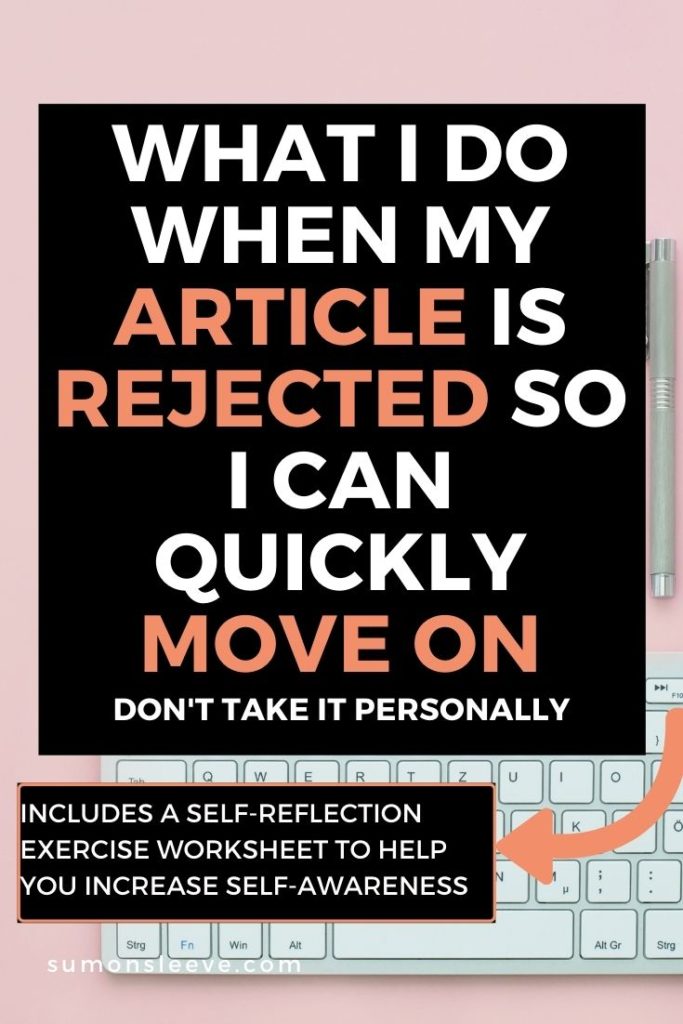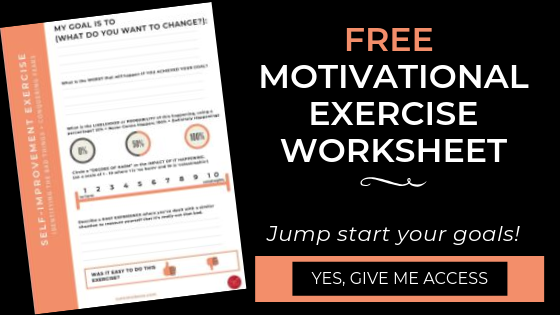As a writer, it sucks when you get that email saying your article, proposal, or idea wasn't accepted. How do I deal with the rejection so that I can quickly move on and keep writing?

You’ve probably heard the wise saying,
“It’s not a rejection; it’s a redirection.”
Okay, sure but it still sucks when you get that email saying your article, proposal, or idea wasn’t accepted. Over 20 different publications have rejected my articles and yet I keep submitting them. The first time my article wasn’t accepted felt the worst but every rejection after that has stung a little less.
It takes a bit of time for me to reel from the burn before I can move forward; however, after experiencing so much rejection, that recovery time has decreased from a couple of hours to mere seconds. When I get that rejection message, here’s exactly what I do to manage my emotions, change my mindset so I can quickly move on.
1. Identify the negative feelings so that the next rejection stings less
Whenever I feel upset, the first thing I do is define exactly how I’m feeling so that the emotions lose their grip on me; I get a better sense of control over them and can manage them more effectively.
Every rejection feels a little different depending on what topic I wrote about, how much effort and time I put into it, how much research I did, which publication it was submitted to, how certain or uncertain it was going to get accepted and so forth.
And of course, depending on my hormone levels, where I’m at in my cycle, the amount of sleep I had the night before and the dynamics in my family at the time, reading that email could either roll off my back or suck me dry like a leech.
So what does rejection feel like?
Rejection feels like a mixture of disappointment, inadequacy, and powerlessness rolled up into a ball of embarrassment and shock. However, lately, as I’ve put myself out there, again and again, rejection now feels indifferent, almost numb. It’s as though I’ve become desensitized to it. Eventually, I’d love to get to a point where rejection and failure feed my ambition and drive so that I use it as an advantage instead of seeing it as a barrier.
If I hadn’t identified the feelings in the first place, I wouldn’t have gained the self-awareness to realize that I had become better at dealing with rejection. I would have been aimlessly going through the motions instead of managing the emotions, possibly become so discouraged that I stop trying altogether.
Once I have a word to describe the feelings, then I know how to manage them.
2. Don’t dwell on self-doubt
Getting rejected confirms our fears of invalidation, fears of finding out what others think of us and the fears of hearing that negative voice inside our heads from someone else,
“You’re not good enough.”
I really try not to stay in this mindset; it gets worse the longer I stay like an Irish person sunbathing. Instead of dwelling on self-doubt, I focus on self-worth, reminding myself of all the obstacles I’ve overcome and accomplishments I’ve achieved thus far.
I think about all the other articles that did get accepted, the folks who reached out to thank me for writing a story that touched them personally, the kind and encouraging comments strangers have left for me, and the moments in my life where I didn’t run away from rejection but persevered and how far it’s gotten me.
3. Don’t stew in pettiness
Sometimes, after feeling sorry for myself, I can get angry. It’s hard not to feel a bit bitter when you’ve put effort into something, expecting a certain outcome, only to have it backfire in your face. This is especially true when I’ve basically catered the article to the publication according to their guidelines and really thought it was a slam dunk. It’s like,
“I did what you asked…now you’re telling me it’s a no?”
Blaming editors, complaining about publications, bad-mouthing the platform and playing the victim card doesn’t help the situation. It’s like when the guy you’re dating doesn’t return your text and then you tell yourself that all men are pigs. Or the girl you asked out turns you down and you convince yourself she’s just an uptight bitch.
I’d like to believe that humans are inherently fair and good and that people don’t deliberately try to make our lives difficult.
4. Don’t take it personally
Most of the rejection notes that I’ve received include something about, “Not the right fit” or “Not at this time”. And I really do think it’s about the fit of my article with the publication rather than my ability to write a good story.
Sometimes, I’ll re-read the submission guidelines and realize why my article wasn’t accepted; this helps depersonalize the rejection because it validates that it really is them, not me. And I have proof that that is true.
5. Explore other publications
One of my articles was rejected by 5 different publications before being accepted and it became one of my most popular ones. Be persistent when it comes to getting your article published by a publication. From developing grit, stretching my range of writing styles, to gaining confidence to begin freelancing, doing this has helped me become a better writer in so many ways.
Also, publications that have a ton of followers do not necessarily guarantee a ton of reads. One of my most read articles was published by a publication that had fewer than 1000 followers at the time.
6. Pivot, learn and keep trying
Another thing that editors like to include in their rejection notes were, “We encourage you to submit again.” or “We look forward to your next story.” You can bet your sweet bippy it’s true.
Consistently writing, putting words down, forming sentences and paragraphs is what makes a decent writer; putting your story out there for the world to read and learning from what they say makes a great writer.
At the end of the day, goals take effort to achieve and dreams take time to reach; don’t aim for the pie in the sky. Aim to build a plane to get there, one word at a time.
So Readers, what do you do when you face rejection? How long does it take you to move on?





